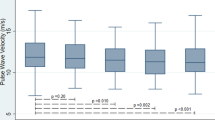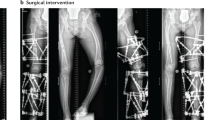Abstract
Primary Raynaud phenomenon (RP) is resultant from transient vasospasm of peripheral arteries and arterioles, is usually precipitated by cold exposure or emotional stress, without any clue for autoimmune connective tissue diseases. We aimed to determine the frequency of vitamin D and B12 deficiencies in pediatric patients with primary RP, and to investigate their roles on the disease course. Vitamin B12 and D were supplemented if the patients had deficiencies. The study included 40 children with primary RP, 29 (72.5%) female and 11 (27.5%) male. The mean and median age were 15.1 ± 1.8 and 15.5 (range, 11.5–17.8) years. Symptoms were improved in 31 (77.5%) patients with warming procedures. Seventeen (41.5%) and 16 (39%) patients had low serum vitamin B12 and D levels, respectively. Vasodilator treatment requirement did not change by vitamin B12 status but was significantly lower in vitamin D deficient and replaced patients. Further studies are needed to clarify our results.
This is a preview of subscription content, access via your institution
Access options
Subscribe to this journal
Receive 12 print issues and online access
$259.00 per year
only $21.58 per issue
Buy this article
- Purchase on Springer Link
- Instant access to full article PDF
Prices may be subject to local taxes which are calculated during checkout
Similar content being viewed by others
Data availability
The data that support the findings of this study are available on request from the corresponding author.
References
Halperin JL, Coffman JD. Pathophysiology of Raynaud’s disease. Arch Intern Med. 1979;139:89–92.
Goldman RD. Raynaud phenomenon in children. Can Fam Physician. 2019;65:264–5.
Herrick AL. Pathogenesis of Raynaud’s phenomenon. Rheumatology. 2005;44:587–96.
Herrick AL. The pathogenesis, diagnosis and treatment of Raynaud phenomenon. Nat Rev Rheumatol. 2012;8:469–79.
al-Awami M, Schillinger M, Maca T, Gschwandtner M, Bieglmayer C, Wagner O, et al. Homocysteine levels in patients with Raynaud’s phenomenon. Vasa. 2002;31:87–90.
Hélou J, Moutran R, Maatouk I, Haddad F. Raynaud’s phenomenon and vitamin D. Rheumatol Int. 2013;33:751–5.
Kumar N. Neurologic aspects of cobalamin (B12) deficiency. Handb Clin Neurol. 2014;120:915–26.
Shillo P, Selvarajah D, Greig M, Gandhi R, Rao G, Wilkinson ID, et al. Reduced vitamin D levels in painful diabetic peripheral neuropathy. Diabet Med. 2019;36:44–51.
Alam U, Petropoulos IN, Ponirakis G, Ferdousi M, Asghar O, Jeziorska M, et al. Vitamin D deficiency is associated with painful diabetic neuropathy. Diabetes Metab Res Rev. 2021;37:e3361.
Ghadiri-Anari A, Mozafari Z, Gholami S, Khodaei SA, Aboutorabi-Zarchi M, Sepehri F, et al. Dose vitamin D supplementations improve peripheral diabetic neuropathy? A before-after clinical trial. Diabetes Metab Syndr. 2019;13:890–3.
Author information
Authors and Affiliations
Contributions
RMKE conceptualized and designed the study, drafted the initial manuscript, and reviewed and revised the manuscript. IETK collected data and carried out the initial analyses. UC critically reviewed and revised the manuscript. All authors approved the final manuscript as submitted and agree to be accountable for all aspects of the work. All co-authors take full responsibility for the integrity of the study.
Corresponding author
Ethics declarations
Competing interests
The authors declare no competing interests.
Additional information
Publisher’s note Springer Nature remains neutral with regard to jurisdictional claims in published maps and institutional affiliations.
Rights and permissions
About this article
Cite this article
Kisla Ekinci, R.M., Taskin Karacay, I.E. & Celik, U. Serum vitamin B12 and D levels in children with Primary Raynaud Phenomenon: a retrospective cohort study. Eur J Clin Nutr 76, 1615–1617 (2022). https://doi.org/10.1038/s41430-022-01151-0
Received:
Revised:
Accepted:
Published:
Issue Date:
DOI: https://doi.org/10.1038/s41430-022-01151-0



